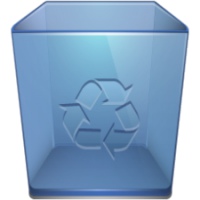
What is a Patch Cleaner? (And Why You Need One)
Let’s be honest: Windows updates are necessary, but they’re a digital mess maker. Step in the patch cleaner a program that sweeps aside old update files your system no longer requires. It’s like the spring cleaner for your PC, focusing on the sneaky gunk that holds you back.
Why bother? Over time, these leftover files pile up, eating into your storage and even causing update errors. If you’ve ever wondered why your computer feels sluggish or why you’re suddenly out of disk space, a patch cleaner might just be your new best friend.
Table of Contents
Lingering Windows Update Files: The Problem
Picture your PC storage as a closet. Each Windows update adds a box of obsolete files “just in case” you must revert from the update. A few months go by, and that closet is filled with boxes you will never open. These harmless-sounding files at first consume GBs of storage and will conflict with new updates, causing annoying errors or crashes.
For example, if you’ve ever seen the dreaded “Windows could not complete the update” message, outdated patches might be to blame. A patch cleaner steps in to clear this chaos before it spirals out of control.
. Greatest Advantages of Employing a Patch Cleaner
Reclaim Storage: Remove gigs of worthless files instantly—ideal for small SSDs.
Speed Up Your PC: With less junk, boot times are faster and app loading is quicker.
Avoid Update Headaches: Prevent conflicts between old and new patches.
Set It and Forget It: Automatically clean, rather than manually root through folders.
In short, a patch cleaner is like tossing your PC an energy drink—it just works better.
How to Download Patch Cleaner for Free Safely
Free software can be a gamble, so walk carefully. Here’s how to get a patch cleaner without the seedy side effects:
Use Only Respected Sites: Grab it from the developer’s site or Microsoft’s forums (skip random “download portals”).
Read the Room: Check user reviews or Reddit posts to ensure the tool is not flagged for malware.
Scan Before Install: Scan the installer via your antivirus—better safe than sorry.
Pro Tip: If a websitebombardsyou with pop-up ads or asks for your e-mail, press the back button.
How to Use Patch Cleaner to Speed Up Your Computer
Does your computer seem a little cluttered? Give it a fresh start with Cleaner — here’s how to do it in just five minutes:
1. Download the tool: Get P-Cleaner from a trusted website. (www.bsstudio.id)
2. Install It: Double-click the downloaded file and follow the simple setup steps—no tech wizardry needed.
3. Run a Scan: Launch the program and allow it to scan your system for redundant and outdated Windows patch files.
4. Look at the Results: It’ll indicate what can be safely removed. Relax—none of these files are vital.
5. Clean and Reboot: Press the “Clean” button, and then reboot your PC to complete the cleanup.
Pro Tip: Turn this into a weekend ritual using your preferred mug of coffee. It’s simple, fast, and your computer will appreciate it.
Is P-Cleaner Safe? What You Need to Know
Safety first! Genuine cleaner utilities (such as those approved by Microsoft) are safe, but dangerous clones exist. To be safe:
Check the Source: If the developer’s name appears to be a random keyboard crunch, avoid it.
Beware “Too Good to Be True” Claims: Utilities with claims of “500% speed gains!” are probably scams.
Stick to the Script: A P-cleaner should not request admin privileges unless it’s scanning.
Legit programs only clean Windows update remnants—not your photos, documents, or cat memes.
Common Issues (and Fixes) When Using Patch Cleaner
Even the best tools hiccup. Here’s how to troubleshoot:
- “Files in Use” Error: Restart your PC and run the cleaner as an Administrator.
- Tool Crashes: Update Windows or reinstall .NET Framework (old dependencies often cause this).
- Accidentally Deleted Something: Use System Restore to roll back to an earlier state.
Most fixes are a quick Google away—don’t panic!

Patch Cleaner vs. Other Disk Cleanup Tools: Which is Best?
Not all cleanup utilities are created equal. Let’s analyze:
P-Cleaner: Laser-specific to Windows update detritus. Light and bulletproof.
Windows Disk Cleanup: Pre-installed but minimal—it omits some background update files.
CCleaner: A Swiss Army knife for cleanup, but an overkill if you simply want to nuke old patches.
If Windows updates are your arch-nemesis, a patch cleaner is the expert you require.
Frequently Asked Questions about Patch Cleaner
Patch Cleaner Free Download
. Free Patch Cleaner Alternatives
Not convinced by a single tool? Have a go with these:
Windows Storage Sense: Included in Settings > System > Storage. Convenient but basic.
Windows Update MiniTool (WUMT): For experienced users who prefer control over their updates.
BleachBit: Open-source and comprehensive, but more challenging to learn. These do the trick, but they’re not as easy to use as a patch cleaner for rapid, focused repairs
Final Thoughts: Is Patch Cleaner Worth It?
Let’s get straight to it: if your computer slows you down, you’re forever fighting “low disk space” notifications, or Windows updates continually fail, a patch cleaner isn’t just worth it—it’s effectively necessary. But, as with any utility, it’s worth it only if your needs, usage, and dedication to having a streamlined system align. Let’s dissect.
The Good: Why a Cleaner Excels
Reclaim Valuable Disk Space
Windows updates accumulate gigabytes of old files over time. For storage-limited SSD users, the clutter is the difference between installing a new game or app and running into an infuriating storage brick wall. A patch cleaner cleans these files out in seconds, reclaiming space without having to dig manually
Fix Update Woes
Ever had an update stall halfway due to “incompatible files”? Nagging patches usually produce these hassles. A patch cleaner deletes old files that clash with newer updates, providing smoother installs.
Fewer background files result in faster boot up times, faster application launches, and generally snappier performance. It’s like taking sand out of your laptop’s gears.
The Caveats: When to Go Slow
Download Sources Matter
Not everything labeled “free” is harmless. Always download from reputable developers or Microsoft’s official forums. Steer clear of fly-by-night third-party websites that attach malware to download.
No Undo Button
After you delete old Windows update files, they are gone forever. Although clean tools only remove outdated patches, always check the scan results before you click “clean.”
It’s Not a Miracle Worker
If your computer is slow due to outdated hardware or bloat ware, a patch cleaner won’t automatically cure it. It’s a maintenance utility, not a full system upgrade.
